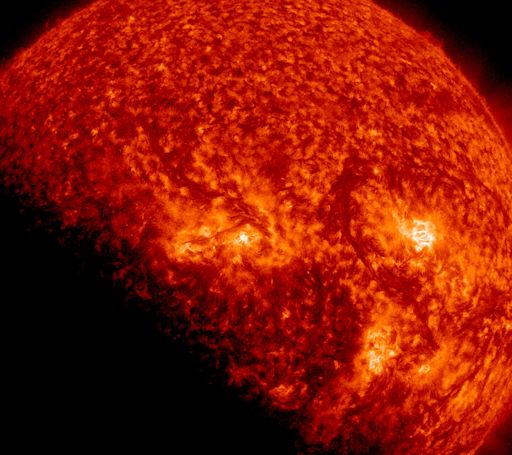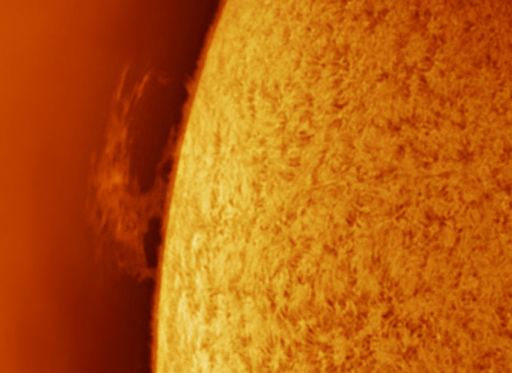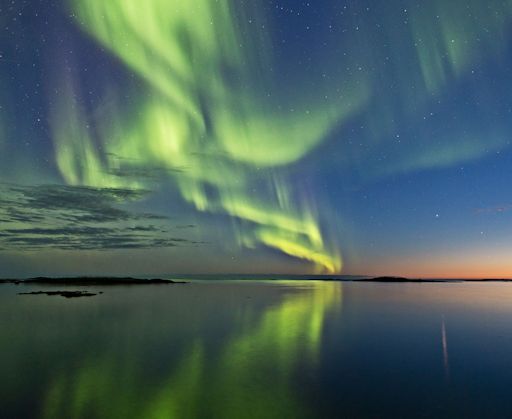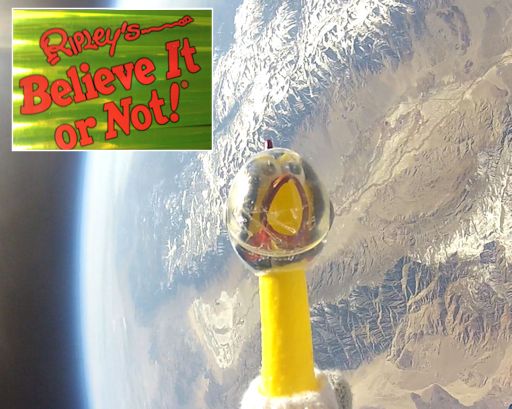They came from outer space--and you can have one! Genuine meteorites are now on sale in the Space Weather Store. | | |
QUIET SUNSPOTS: All of the sunspots on the Earthside of the sun are stable and quiet. NOAA forecasters estimate a slight 5% chance of M-class solar flares and no more than a 1% chance of X-class flares on Sept. 4th. Solar flare alerts: text, voice.
SOLAR ECLIPSE: Twice every year, around the time of the equinoxes, Earth can pass directly between the Sun and NASA's Solar Dynamics Observatory (SDO), producing a series of beautiful eclipses from the point of view of the spacecraft. SDO's autumnal eclipse season began this week, producing a partial blackout of the sun:

During the eclipse, which was centered around 0658 UT on Sept. 2nd, Earth covered about half of the sun. Because these eclipses typically last for only minutes each day (maximum=72 minutes), there is still plenty of uninterrupted time for SDO to monitor activity on the sun. The ongoing eclipse season will end on Sept. 25th. Between now and then, stay tuned for some rare blackouts.
Realtime Space Weather Photo Gallery
ACTIVE PROMINENCE: The face of the sun may be quiet, but the edge is surging with activity. "A fantastic prominence is forming on the solar limb," reports amateur astronomer Sergio Castillo of Inglewood, California. "It is so bright, it caught my eye right away." This is how it looked through his backyard solar telescope:

"This prom is for sure making up for the absence of flares on the sun this week," he adds.
Prominences are clouds of hot-glowing plasma held above the sun's surface by magnetic fields. Observing from the Sorbas area of southern Spain, amateur astronomer Andy Devey has video-recorded a strong vortex motion in this prominence. If the spinning motion destabilizes the underlying magnetic field and the prominence collapses, the result could be a Hyder flare. Solar astronomers are encouraged to monitor developments. Solar flare alerts: text, voice.
Realtime Space Weather Photo Gallery
ARCTIC LIGHTS: "Last night (Sept. 2) we had a spectacular sunset," reports photographer Frank Olsen, "but the auroras were even better." This is what the end of the day looked like from Olsen's photo-site on Andøya island, Norway:

The source of the display was a minor solar wind stream buffeting Earth's magnetic field--not hard enough to trigger a full-fledged geomagnetic storm, but enough to spark auroras visible against the darkening late-summer sky.
More lights could be in the offing. NOAA forecasters estimate a 25% chance of polar geomagnetic storms on Sept. 5-6 when a solar wind stream is expected to hit Earth's magnetic field. Aurora alerts: text, voice.
Realtime Aurora Photo Gallery
SWx EXPERIMENT IN RIPLEY'S BELIEVE IT OR NOT: In March 2012, a group of high school students in Bishop, California, used a helium balloon to launch a pair of medical radiation badges to the edge of space. The goal of their experiment was to measure high-altitude radiation levels during a solar proton storm, which was underway at the time of the flight. Usually such experiments are published in academic journals, but this time Ripley's Believe it or Not! took an interest. Why? Because the students pinned the radiation badges to a rubber chicken:

Camilla the Rubber Chicken, formerly of NASA, crewed the suborbital capsule and wore the radiation badges on a hand-knit spacesuit. She reached an altitude of 128,000 feet, withstanding temperatures as low as -63o C and air pressures as little as 1% sea level during the nearly three hour flight. More information about the flight may be found on page 235 of Dare to Look!, Ripley's latest hardbound volume available from RipleyBooks.com. (Note: The same picture was selected by Time magazine as one of the most surprising photos of 2012.)
The students, who call themselves Earth to Sky Calculus, are still doing space weather research. Recent and ongoing experiments include payloads to measure the effect of solar flares on the ozone layer and to assess the ability of microbes to withstand radiation storms. You can follow their activities on Facebook and Twitter.
Realtime Noctilucent Cloud Photo Gallery
[previous years: 2003, 2004, 2005, 2006, 2007, 2008, 2009, 2011]
Realtime Comet Photo Gallery

